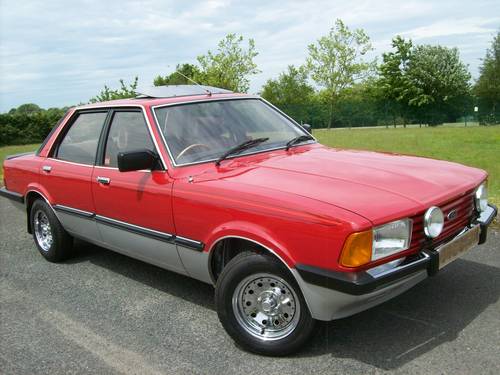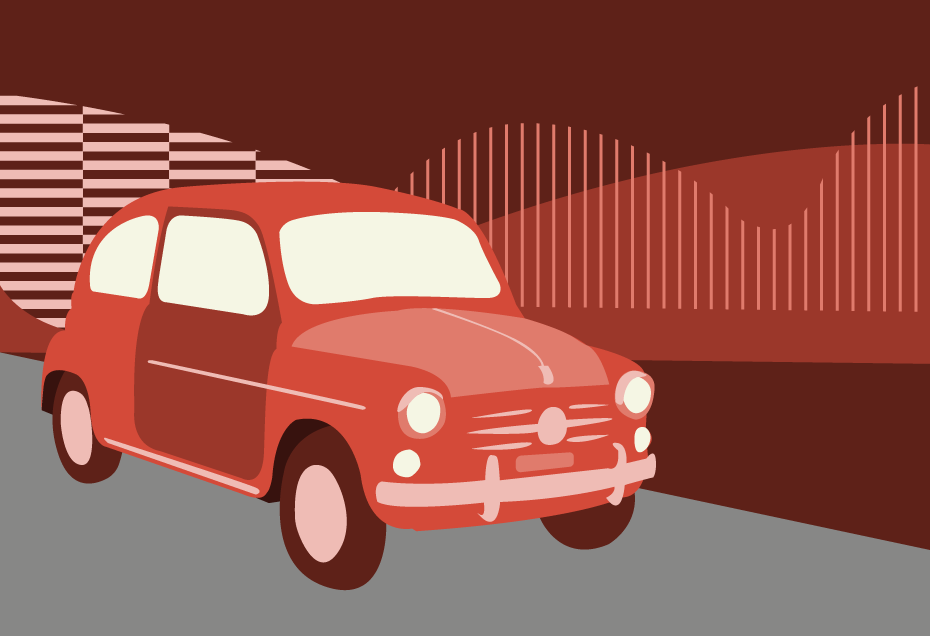There was a time when it seemed that almost every middle manager or sales rep’s company car was a Ford Cortina.
Now they’re more likely to drive a BMW or an Audi, but here we take a look back at what made the Cortina – now more than 50 years old – such a roaring success.
From ubiquitous saloon to rare classic
The Cortina was Britain’s best-selling car for 10 of the years between 1967 and 1981, a phenomenal success story fuelled partly by the increasing demand for reliable, efficient fleet cars with a large array of trim levels to suit everyone from junior executives to directors looking for a hint of luxury.

By the time it was replaced by the jelly-mould Sierra in 1982, after five generations, nearly 4.3 million had been made, of which more than 3 million had rolled off the Dagenham production lines.
This was during an era when buying British – or at least British-built – counted for more to the car-buying public than in today’s global marketplace.
But as well as its Britishness, the Cortina was also a brilliant all-rounder – lighter than competitors, more fuel efficient, and with unrivalled space for its class, the Ford was also affordable to buy with a standard 1200cc Mk 1 costing £573 when it was launched in 1962.

It’s no exaggeration to say that the Cortina created an entirely new class, with cars like the Vauxhall Cavalier successfully muscling into the growing fleet market from 1975 onwards.
As well as its ubiquity in Britain’s middle-class driveways, the Cortina enjoyed a fruitful motorsport career, first in rallying and then in saloon car racing, with F1 World Champion Jim Clark driving a Lotus-Cortina to first place in the British Saloon Car Championship in 1964.
In the same year, a team of factory-prepared Cortina GTs blew away all-comers in the gruelling East African Safari, while the 1558cc, twin-cam Lotus Cortina also enjoyed success in dozens of races across Britain, Europe and North America.
Named after the Italian ski resort Cortina d’Ampezzo – at its launch several Cortinas were driven down the resort’s bobsleigh run – the car featured a 1200cc engine at launch, with American-style rear wings and distinctive circular rear lights split into thirds by chrome strips (both Mercedes and CND threatened legal action believe it or not).

Ford quickly realised that the small engine was being overworked by sales reps ploughing along Britain’s early motorways, and a 1500cc engine was introduced, along with a Weber carburettor and Cosworth camshaft to produce the Cortina GT.
The boxier mark 2 was introduced in 1966, with the legendary and now highly desirable 1600E arriving a year later, along with with an estate with class-leading load capacity.
Like our illustration of the Ford Cortina at the beginning of the article?
Download a free high-quality poster version here.

The 1600E, which can now set you back up to £10,000 for a good example, featured a tuned Kent engine, walnut dash and door trim, sports seats and steering wheel, and Rostyle wheels.
The “coke-bottle” mark 3 arrived in 1970 and, after some initial production difficulties caused by a 10-week strike (a taste of the future for the British car industry) the new model was Britain’s best-selling car in 1972 having seen off the ageing Austin/Morris 1100 and 1300.

Sporting an improved dashboard with upgraded trim, the 2000E got the classy 1600E treatment and the Cortina went from strength to strength, with just one real problem – rust.
Corrosion is part of the reason that fewer than 1,000 cars survive today, but this rarity compared to the numbers built mean that this 70s icon is now rising in price, with a decent example costing upwards of £5,000.
In 1976 – a year forever ingrained on the memory of fortysomethings for its long hot summer, scorched fields and emergency drought measures – the mark 4 was born. In many ways, the square design looked more like an evolution from the mark 2 than the curvy mark 3, but it sold more than 1.1 million units in its three-year run before the car’s final rebody in 1979.

The mark 3 saw the introduction of the Ghia name replacing E as the top of the range model – and a 2.3litre version gave more power (with a top speed of 109mph) but didn’t sell well.
Refinement, sound-proofing and visibility improved, but rust-proofing did not. In fact, the mark 4 is the rarest of all the Cortina models as most either rotted away or were destroyed in demolition derbies (probably while already partly rusting away).
Rust-proofing improved for the introduction of the final hurrah for the Cortina – the mark 5 launched in September 1979 with more power, more glass and new front and rear lights.
Adrian Flux Classic Car Insurance
The basic body shape remained largely the same and it was more of a facelift than a new model, but the Cortina remained Britain’s best-selling car in 1981 before increased competition from the Cavalier started to eat into fleet sales.
The special edition Crusader – with the highest specification yet – was sold alongside the new Sierra in 1982, at 30,000 sales the best-selling special edition in the car’s history before the more modern-looking but controversial jelly-mould took over.
Although the very last Cortina rolled off the Dagenham line – a silver Crusader now at the Ford Heritage Centre – on July 22, 1982, they were still being sold on forecourts until as late at 1987 (though one unregistered GL left a Derbyshire dealer in 2005!).
Bits of the Cortina – well, the chassis – lived on in cabbie’s favourite the Hyundai Stellar from 1983 until 1992, in a body designed by Giugiaro.
But the Cortina story was over, a remarkable British success spanning two decades and 4.3 million cars, with each generation having its own devotees. What’s your favourite?
Cortinas on screen
Over the years, the Cortina made scores of TV and film appearances, with Carry on Cabby an early example in 1963.
Michael Caine drove a mark 2 in Billion Dollar Brain (no, I haven’t seen it either) and again in Get Carter (seen that one) and the mark 2 also turned up on the Benny Hill Show, as well as sitcom Bless This House and classic crime drama The Sweeney.
Roger Moore memorably crash-landed a mark 4 on to the roof of a log cabin in The Spy Who Loved Me, while the same generation appeared in The Professionals.
A glorious 2000E turned up in the 2006 BBC series Life on Mars, driven by time-travelling cop John Sim and, of course, Cortinas featured heavily in the 2011 film Made in Dagenham.
Insurance from Adrian Flux
Get classic car insurance for your Cortina – whatever model or variant – from Adrian Flux.
Features can include:
- Agreed value
- Limited mileage discounts
- Owners club discount
- Laid up cover
- Wedding hire cover








